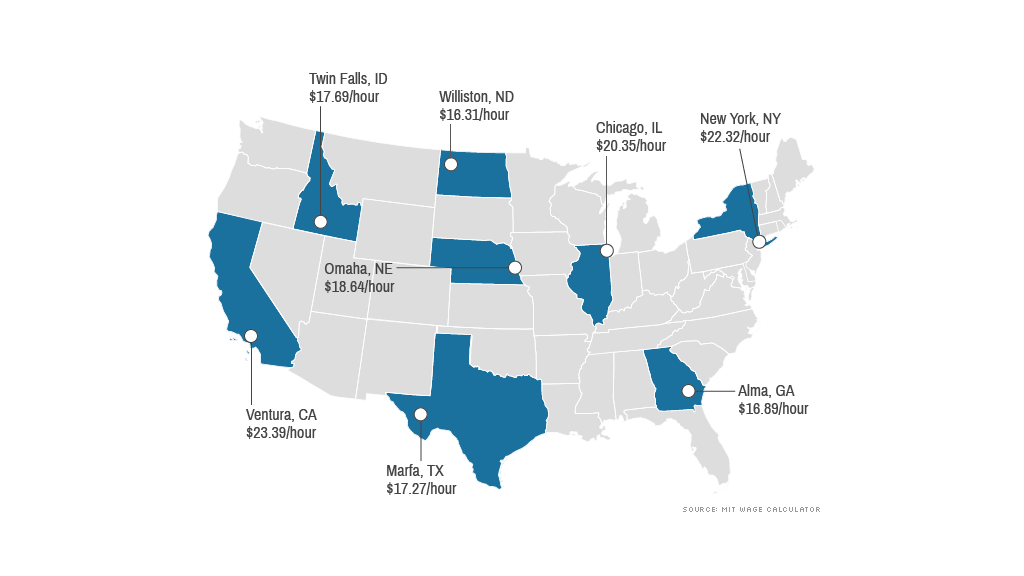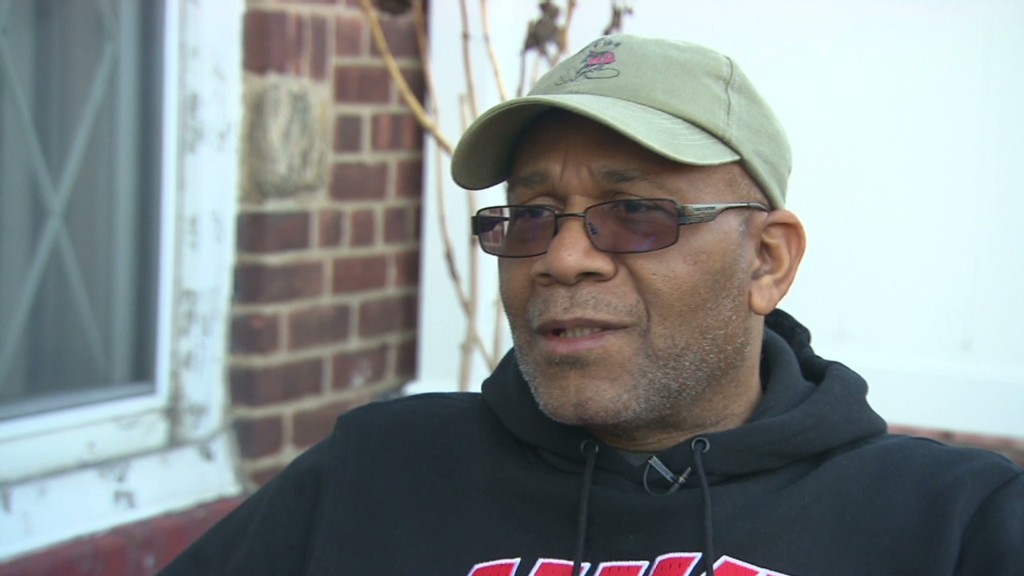
Kevin Burgos works full-time, earns more than the minimum wage and even fixes cars on the side to bring in extra money to support his family.
Yet, it's barely enough to cover his basic living expenses, and Burgos finds himself in a $600 hole each month.
Burgos' situation represents the woeful inadequacy of minimum wage and what could be a central question in the income inequality debates -- what is a person's living wage?
For Burgos, it would mean an additional $6.50 an hour over what he makes now.
Currently, he makes $10.50 per hour as an assistant manager at Dunkin Donuts in Hartford, Connecticut. It's well above both the federal and state minimum wages of $7.25 and $8.70, respectively. It's even more than the $10.10 per hour wage that Senate Democrats are fighting for. He brings in an extra $400 each month by fixing cars on the side.
He works 35 hours each week to support his family of three young children. All told, Burgos makes about $1,800 each month.
But his bills for basic necessities, including rent for his two-bedroom apartment, gas for his car, diapers and visits to the doctor, add up to $2,400. To cover these expenses without falling short, Burgos would need to make at least $17 per hour.
"I am always worried about what I'm going to do for tomorrow," Burgos said.
Related: Millennials turn up the heat against low wages
As the debate over the federal wage floor heats up in Washington, experts are making the point that the minimum wage does not equal a living wage.
Amy Glasmeier, a professor of economic geography at the Massachusetts Institute of Technology, has created a living wage calculator based on government data, which bears out this argument.
She breaks down the total cost of living, including food, housing, transportation, child and health care, based on the county in which people live.
Glasmeier said the cost of living rises with the size of the city.
For instance, in places with fewer than 250,000 people, Glasmeier found that the living wage would be between $12 and $15 per hour. In cities with 250,000 to 1 million residents, its $17, and in cities with more than one million residents, it's $20 per hour.
"The living wage calculator shows what you really need to make it, to survive," Glasmeier siad. "The minimum wage was never meant to be something for people to live on."
Related: 2014 minimum wage, state by state
Using Glasmeier's calculator, Burgos would need to make about $15 per hour. But because he has three kids, his living wage would need to be slightly higher.
Any increase in his wage would make a huge difference to his life, Burgos said. That's why he's participated in several union-backed fast food strikes that have been building momentum across the country in the last couple of years. He hopes lawmakers will try to bridge the gap.

"[Politicians] don't really know how it feels to live in poverty, so they say let's raise the minimum wage to $10.10 and maybe they'll shut up," he said. "But $10.10 means we'll still have to struggle. It's really not a living wage."


